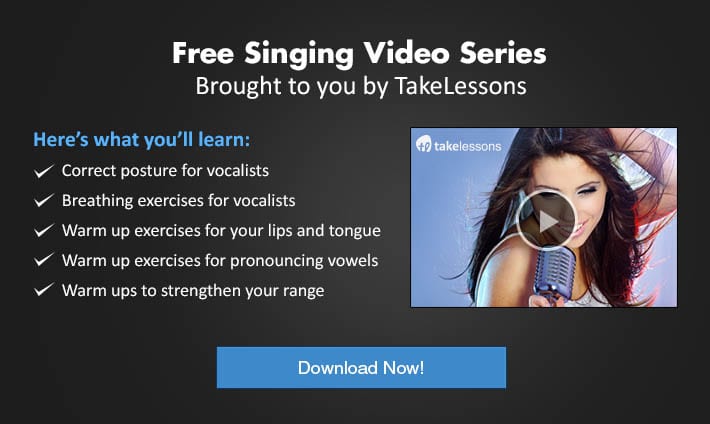 For months now, the Billboard chart has looked pretty similar each week, with Adele perched at the #1 spot with her hit album 21. Adele has maintained that spot for 18 weeks now, needing only 3 more weeks to pass previous records made by the Bodyguard soundtrack and Elvis Presley’s Blue Hawaii. With an accomplishment like this, we don’t see her leaving the spotlight for some time.
For months now, the Billboard chart has looked pretty similar each week, with Adele perched at the #1 spot with her hit album 21. Adele has maintained that spot for 18 weeks now, needing only 3 more weeks to pass previous records made by the Bodyguard soundtrack and Elvis Presley’s Blue Hawaii. With an accomplishment like this, we don’t see her leaving the spotlight for some time.
As a singer, you’ve no doubt heard about the importance of proper breathing. In fact, deep breathing can help all musicians, as it helps to relieve tension, enhance focus, and even alleviate stage fright. It doesn’t surprise us, then, when musicians sing the praises of practicing yoga to improve vocal skills. Can yoga really help you sing better? It certainly won’t hurt. But consider it your warm-up – and with any warm-up, there are both effective and ineffective strategies. Here, speech pathologist Joanna Cazden shares some important guidelines to keep in mind when it comes to yoga and singing, as published on SingerUniverse.com.
Inside your voice box, or larynx, your vocal cords function as a valve in the airway, and they are exquisitely sensitive to airflow. They can get dry, tired, or irritated if the airflow is too forceful. If it’s too weak, the cords tend to tighten and squeeze, rubbing against each other and thickening over time. So while hatha yoga postures (asanas) are generally good for singers, the way you use your breath during those postures is even more important. Advanced breathing exercises (pranayama) should be approached with extra care.
First, the singing breath does not use the balanced, equal-in-and-out rhythm common to most yoga teaching. Voice production requires a very swift inhalation followed by a long, slow exhalation. You do this automatically when you talk, but it takes practice to quickly inhale enough to sing and then exhale very gradually. Try occasional cycles of breathing in fast and out slow during your asanas, with a relaxed throat, to reinforce this asymmetrical rhythm.
Second, some yoga teachers train a particular sequence of inhalation, such as drawing air into the belly first, then the waist, then the upper chest. These techniques are not harmful, but when singing, you don’t have time to inhale in stages—the whole breath system must open simultaneously. Again, just being aware of the difference can help you switch gears from yoga practice to vocal rehearsal.
Third, the vocal cords are vulnerable to dryness and fatigue when vigorous forms of audible breathing, sometimes called ujaya, are focused in the throat. The louder the breath sounds and the longer such practice, the greater the risk of vocal cord irritation. If you do this type of pranayama, place the friction higher, near the soft palate, and allow at least half an hour of rest before vocalizing.
In general, politely avoid any teacher who always wants to hear you breathe. Effective breathing for most styles of yoga can be totally silent, and experienced teachers can check on you by sight rather than sound. Vocalists need this extra safety to avoid drying the cords.
Keep these guidelines in mind when you reach for your yoga mat – and if you’re not currently a yoga fan, why not give it a try? As long as it’s done correctly, any breathing exercise can benefit musicians of all types and levels. Have you seen improvements with the help of yoga? Leave a comment and join the discussion!
Suzy S.
